Led by GDI, ‘Inclusive Infrastructure’ is a 3-year sub-programme, which considers the idea that equal access to AT is dependent on an enabling physical environment. Engaging stakeholders who help shape the built environment, with the inclusion and participation of AT users in Columbia, India, Indonesia, Kenya, Mongolia and Sierra Leone. Partners include: Sierra Leone Urban Research Centre (SLURC), Kota Kita, El Comité, National Institute for Urban Affairs (NIUA), Kilimanjaro Blind Trust Africa (KBTA), Kiran Society, AIFO, Tegsh Niigem and Universal Progress ILC.
Built environment barriers to assistive technology and accessibility in unplanned settlements in Ulaanbaatar.
(Image captured from a participant photo diary in case study 1 in Ulaanbaatar, Mongolia)
The aim of the research is to build evidence on the awareness, understanding, acceptance, application and experience of Inclusive Design and accessible environments globally, particularly in lower and middle-income countries by conducting research in three areas:
- The community experience of disability and the built environment
- Practice focused research on the awareness and application of inclusive design
- Policy-focused research on the governance, guidelines and protections of inclusive design at the highest levels
The overarching research question
‘What is the current state of inclusive and accessible environments and infrastructure in LMICs, and what is the role of inclusive design in creating an enabling environment for disabled people?’
Local and specific knowledge of environments
Globally, the terms used to discuss inclusion in the built environment vary. In the UK, inclusive design is more commonly used, but globally universal design and design for all can be more common. Inclusion agendas across international development frameworks such as the Sustainable Development Goals and new urban agenda are broad, and do not focus specifically on the needs and aspirations of disabled people.
The Inclusive Infrastructure team want to build local and specific knowledge of what constitutes an inclusive environment in diverse low and middle income countries, by engaging directly with community, practice, industry and policy in cities in low- resource settings to ensure insights and actions are appropriate and adaptable to diverse contexts. By conducting research on both the awareness, understanding, practice and policy of inclusive design in low-resource settings, and the experienced accessibility and inclusivity of the built environment - the team anticipates primarily benefitting Global South locations and FCDO priority countries. The hope it that the research will also have benefit for the most vulnerable communities globally, including excluded and low-resourced communities in high-income settings.
Challenges around inclusive design and accessible environments in lower-and-middle-income settings include:
- Low understanding and implementation of inclusion measures across a whole project life cycle
- The enforcement and awareness of both regulations and good practice
- A lack in understanding of inclusive design and engagement through all stakeholders in the built environment industry, from policy and planning to design and construction
- A need for the voices of disabled people in these processes to be more often heard and integrated
- International policy and frameworks for inclusion are currently not embedded, and need to be mobilised at a local level where research on the challenges and opportunities for inclusion in the built environment across diverse stakeholder groups will be valuable
Latest
-
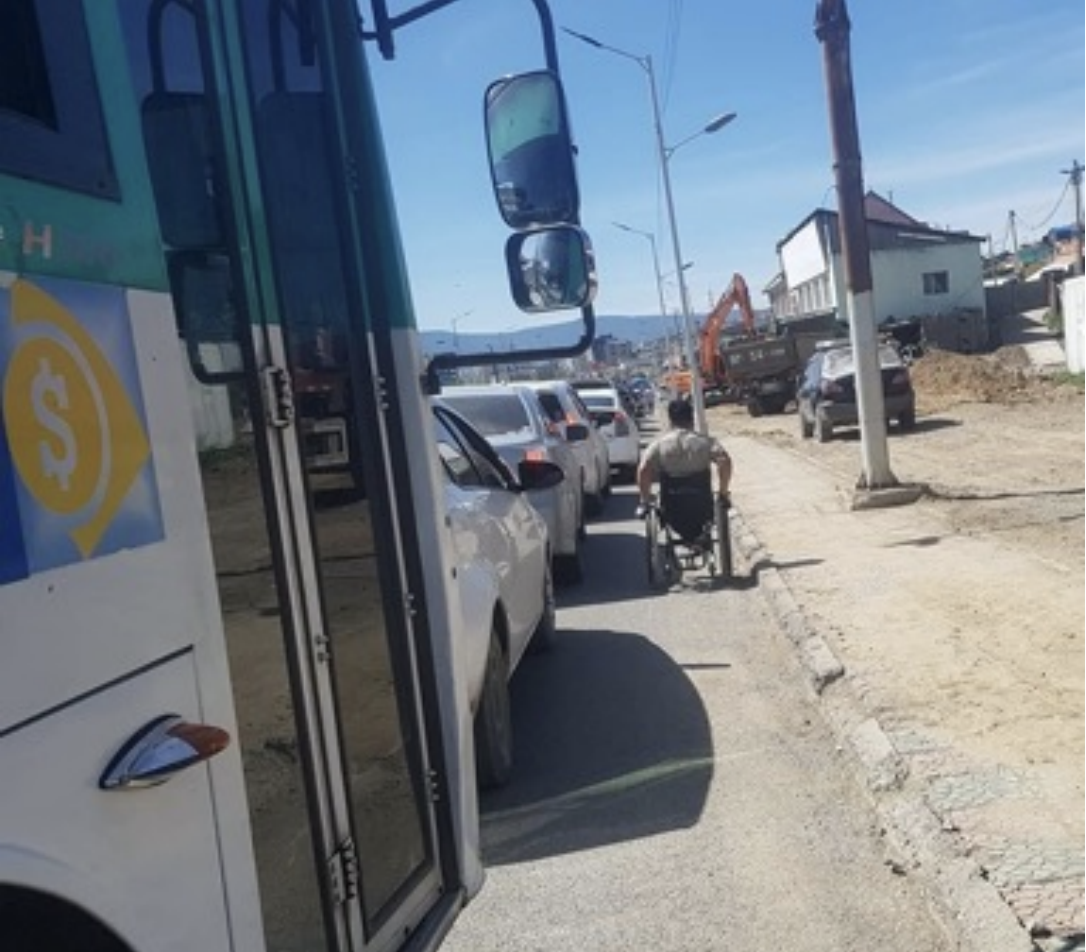
Collection of the AT2030 Inclusive Infrastructure case studies on Accessibility and Inclusive in the Built Environment.
Global Disability Innovation HubJune 13, 2024GlobalCase Studies and ReportsA collection of the case studies from the Inclusive Design and Accessibility of the Built Environment research.
-
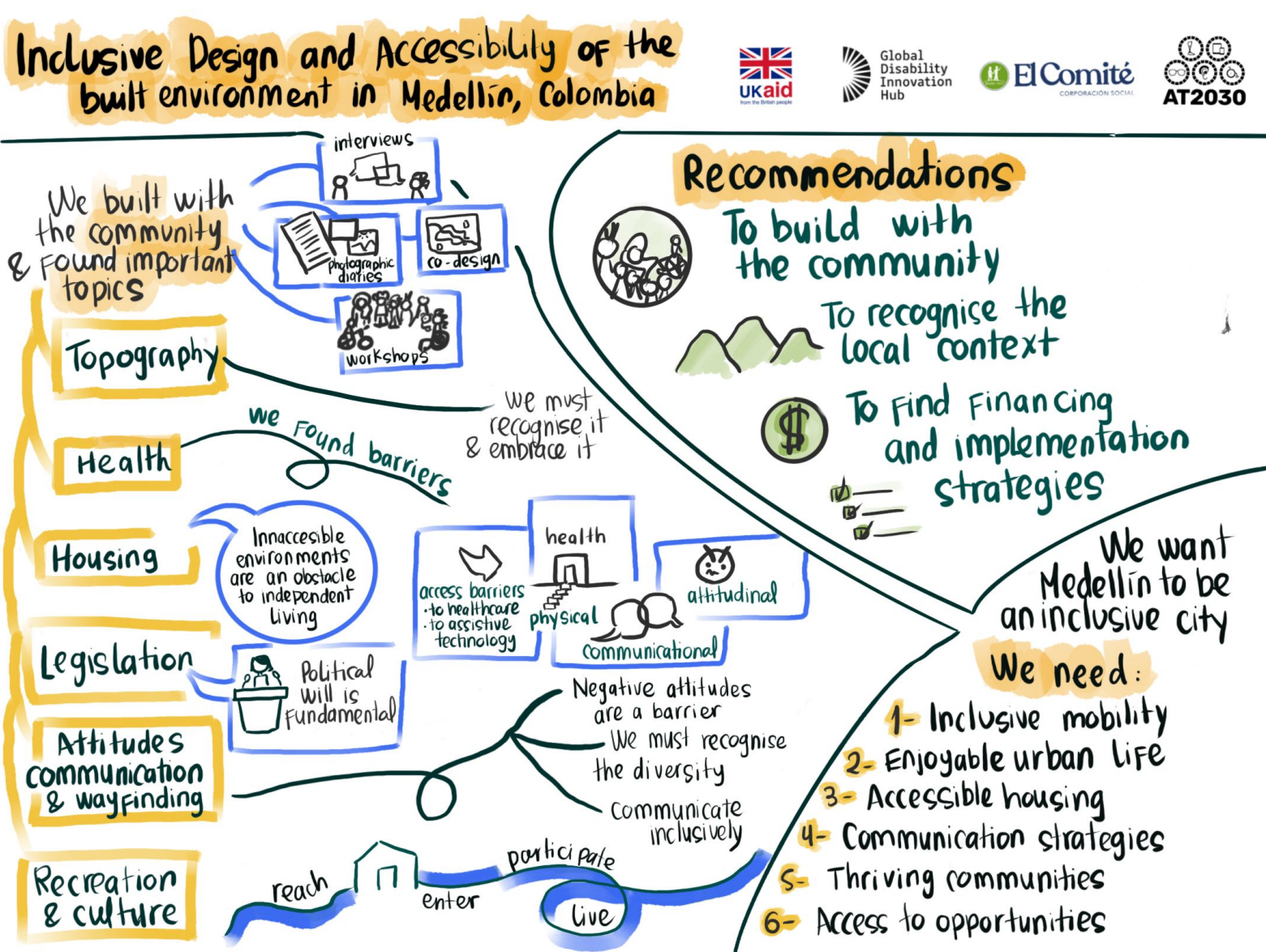
Communicating inclusive design in different ways - a story from Medellín, Colombia
Global Disability Innovation HubDec. 18, 2023Between December 2022 and July 2023, GDI Hub’s Inclusive Design team worked in Medellín, Colombia as one of our AT2030 Inclusive infrastructure case study cities - where we created graphics and videos to communicate the key findings of the project to diverse audiences, in both English and Spanish. This blog showcases these graphics.
-
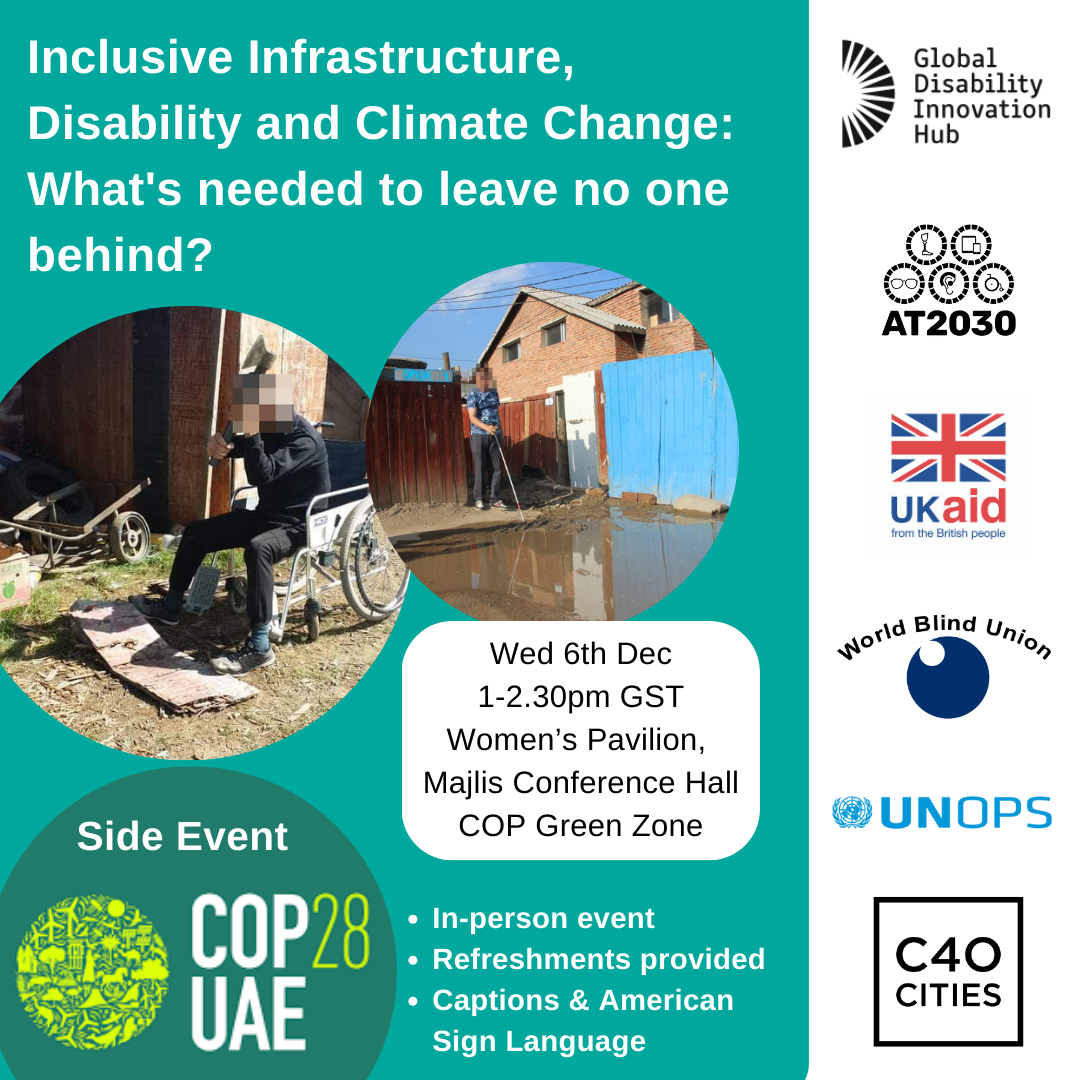
Inclusive Infrastructure, Disability and Climate Change: what's needed to leave no one behind
Global Disability Innovation HubNov. 30, 2023UAEJoin us at COP28 as we bring together stakeholders working across inclusive infrastructure, disability-inclusive urban development, and climate change action to discuss partnerships and practical actions to ensure persons with disabilities are not left behind. As cities integrate climate adaptation and mitigation infrastructure, accessibility and inclusion must be embedded. There is no resilient and sustainable future without inclusion.
-
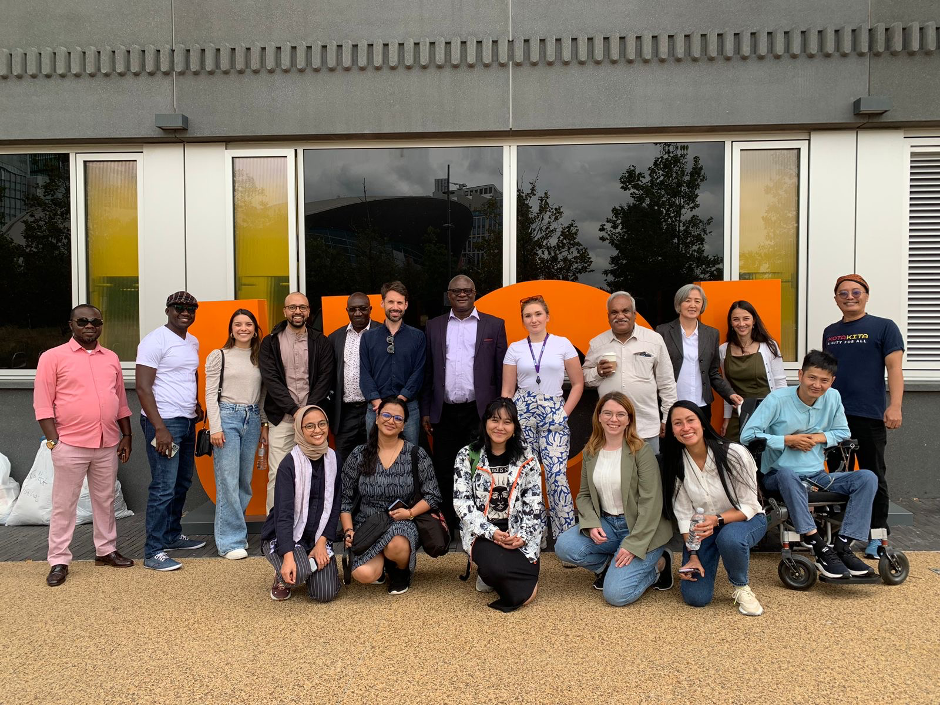
AT2030 Inclusive Infrastructure Film: Six Cities, One Park!
Iain McKinnonOct. 19, 2023GlobalOn the 13th and 14th of September 2023, GDI Hub held its Disability Innovation Summit at our offices on the UCL East campus on Queen Elizabeth Olympic Park, east London. This international event provided the perfect moment for the AT2030 Inclusive Infrastructure team to bring representatives from the six cities they have been researching over the past 3 years together, in person, for the first time.
-
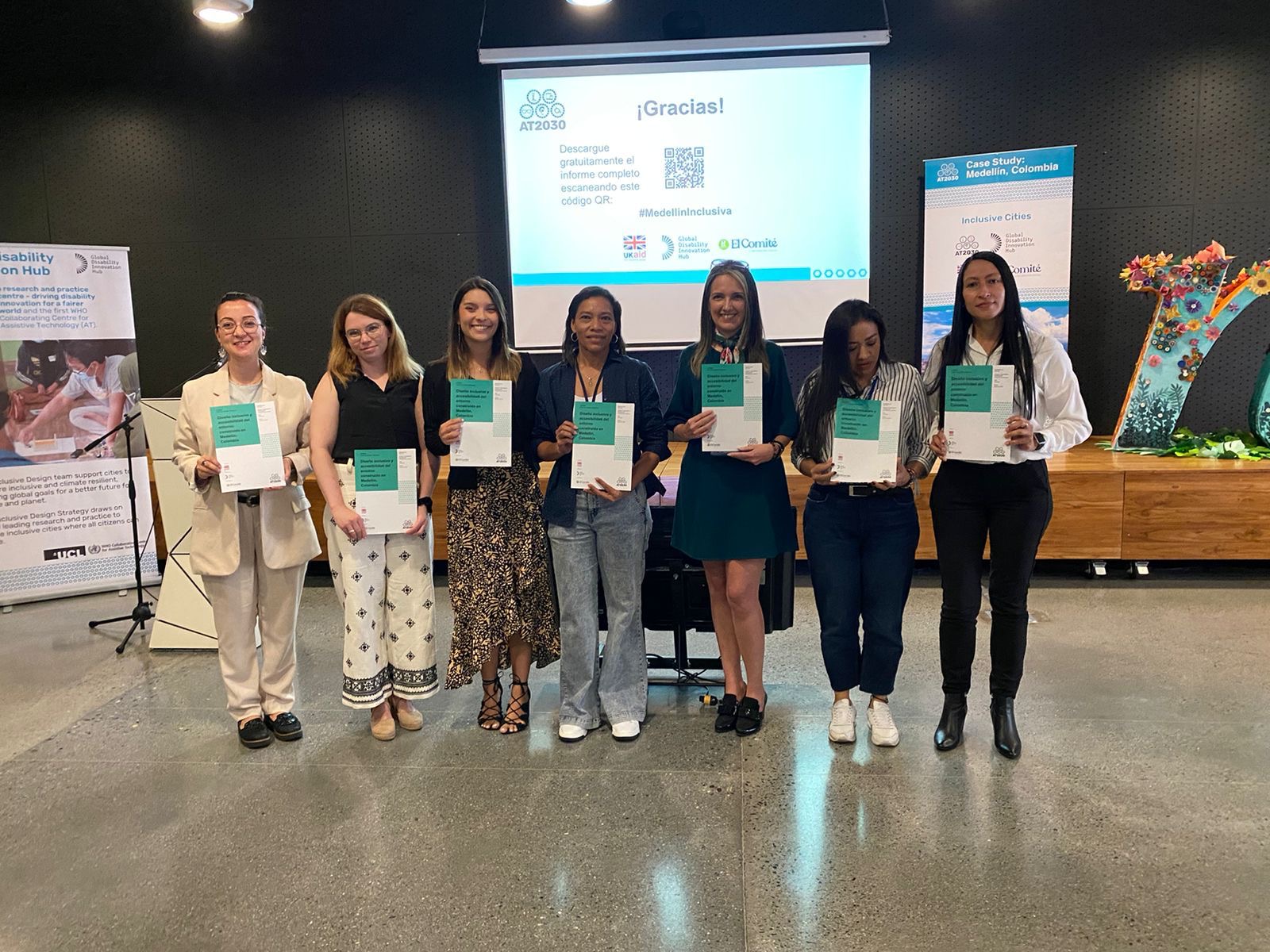
Inclusive Infrastructure Case Study Launched in Medellín, Colombia - Exploring Inclusive Environments
Global Disability Innovation HubAug. 10, 2023ColombiaMedellín, Colombia is the sixth and final case study city under the Global Disability Innovation Hub (GDI Hub) led and UK Aid funded AT2030 Inclusive Infrastructure sub-programme. Colombia’s second largest city, Medellín is well-known for its progress in urban development in the last 20 years, moving forward from its violent history. Medellín has been designated a district of innovation and is known for innovative urban projects such as its cable cars and electric escalators that connect higher altitude, low-income communities on the peripheries of the city. This case study explores the current state of accessibility and inclusion in the city for persons with disabilities and helps understand whether such urban innovations are inclusive for all the city’s residents.